Mathematics
Spring: n/a
Summer: n/a
Part-time (Daytime)
Overview
Our Master of Science in Mathematics provides you with basic graduate training in mathematics. As a math graduate student, you will choose from a widely ranging program of study that may focus on pure or applied mathematics. The program's flexible coursework is designed to prepare you for employment in areas such as academia, government, business or industry or for further graduate study. You will work with your graduate advisor to design a program of study geared towards your interests and goals.
Program Outcomes
Upon graduation, you will have achieved a mastery of fundamental knowledge in a broad range of mathematical areas as well as a deeper understanding of at least one particular sub-field of mathematics and/or related field. You will hone your ability to solve problems and communicate solutions and concepts clearly and in rigorous mathematical language. Those of you who choose the "Thesis Option" will also be able to demonstrate an ability to present and defend research work in oral, written, and graphic forms.
Graduates of the MS Program have gone on to employment in areas such as academia, government, business or industry or have gone on to be accepted at competitive PhD programs.
Application Requirements
- Application fee
- Resume/CV
- Personal Statement (750 words or fewer): This statement should include your reasons for wanting to pursue graduate study at Tufts and within the Department of Mathematics. Discuss what makes mathematics exciting to you. In addition, please include a description of a math problem or topic that challenged you early in your undergraduate experience. Discuss how you, perhaps with the help of others, overcame those difficulties to understand the problem better and how you presently understand it. Do not be afraid to choose something from a "basic" class like calculus. Your application materials already speak to your achievements; here instead we are interested in hearing about how you have developed your interest in mathematics. Please limit your statement to 750 words or fewer.
- Official TOEFL or IELTS, if applicable
- Transcripts
- Three letters of recommendation
GSAS Fifth-Year Master's Program
Tufts undergraduates can pursue this program as part of the GSAS Fifth-Year Master’s Program.
Tuition and Financial Aid
See Tuition and Financial Aid information for GSAS Programs. Note: This program is eligible for federal loans and Tufts tuition scholarships.
Career Outcomes
Average Salary: $60K - $90K
Would Recommend the Program: 80%*
Average Age: 24
*Sources: GSAS-SOE Graduate Exit Survey 2020 - 2021 and Academic Analytics (Alumni Insights)
Faculty
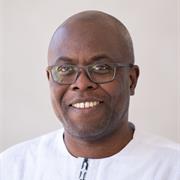
Kasso Okoudjou

Kasso Okoudjou
Research/Areas of Interest: Time-frequency analysis, pure, applied, and numerical harmonic analysis; analysis and differential equations on fractals and graphs.
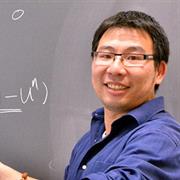
Xiaozhe Hu

Research/Areas of Interest: Scientific computing and numerical analysis; Parallel multigrid and multilevel methods for large-scale coupled systems; Efficient numerical methods for reservoir simulation, fluid-structure interaction, and other applications.

James Adler

James Adler
Research/Areas of Interest: Scientific computing and numerical analysis: Efficient computational methods for complex fluids, plasma physics, electromagnetism and other physical applications.

Bruce Boghosian

Bruce Boghosian
Research/Areas of Interest: Applied dynamical systems, applied probability theory, kinetic theory, agent-based modeling, mathematical models of the economy, theoretical and computational fluid dynamics, complex systems science, quantum computation Current research emphasis is on mathematical models of economics in general, and agent-based models of wealth distributions in particular. The group's work has shed new light on the tendency of wealth to concentrate, and has discovered new results for upward mobility, wealth autocorrelation, and the flux of agents and wealth. The group's mathematical description of the phenomenon of oligarchy has also shed new light on functional analysis in general and distribution theory in particular. Secondary projects include new directions in lattice Boltzmann and lattice-gas models of fluid dynamics, kinetic theory, and quantum computation.
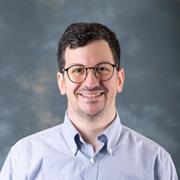
Corey Bregman

Corey Bregman
Research/Areas of Interest: Geometric group theory, low-dimensional topology, CAT(0) spaces
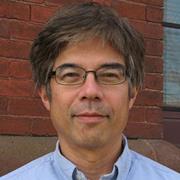
Fulton Gonzalez

Fulton Gonzalez
Research/Areas of Interest: Noncommutative harmonic analysis, representations of Lie groups, integral geometry, and Radon transforms

Boris Hasselblatt

Boris Hasselblatt
Research/Areas of Interest: Geometrically motivated hyperbolic dynamics — Hasselblatt's research, undertaken with colleagues from several continents, is in the modern theory of dynamical systems, with an emphasis on hyperbolic phenomena and on geometrically motivated systems. He also writes expository and biographical articles, writes and edits books, and organizes conferences and schools. His publication profile can be viewed at https://mathscinet.ams.org/mathscinet/author?authorId=270790 (with a subscription). Former doctoral students of his can be found in academic positions at Northwestern University, George Mason University, the University of New Hampshire, and Queen's University as well as among the winners of the New Horizons in Mathematics Prize.

Misha Kilmer

Misha Kilmer
Research/Areas of Interest: Numerical Linear and Multilinear Algebra, Scientific Computing, Image Reconstruction and Restoration

George McNinch

George McNinch
Research/Areas of Interest: The structure and representations of algebraic groups

James Murphy

James Murphy
Research/Areas of Interest: Machine learning, harmonic analysis, statistical learning, graph theory, data science, computational mathematics, image processing, signal processing
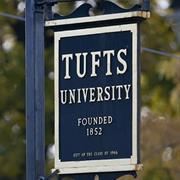
Elizabeth Newman

Elizabeth Newman
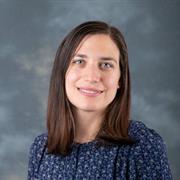
Samantha Petti

Samantha Petti
Research/Areas of Interest: computational biology, algorithms, probability, fitness landscapes, evolution, protein structure, statistical inference

David Smyth

David Smyth
Research/Areas of Interest: Algebraic Geometry

Kim Ruane

Kim Ruane
Research/Areas of Interest: Geometric Group Theory/Topology

Abiy Tasissa

Abiy Tasissa
Research/Areas of Interest: Matrix completion, compressive sensing, distance geometry

Montserrat Teixidor I Bigas

Montserrat Teixidor I Bigas
Research/Areas of Interest: To each point on a curve, one can often associate in a natural way a line or plane (or higher dimensional linear variety) that moves with the point in the curve. This set of linear spaces is called a vector bundle. Vector bundles appear in a variety of questions in Physics (like the computation of Gromov-Witten invariants) . Moreover, they provide new insights into old mathematical problems and have been used to give beautiful proofs to long standing conjectures as well as striking counterexamples to some others.
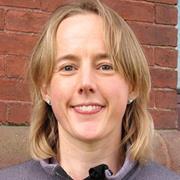
Genevieve Walsh

Genevieve Walsh
Research/Areas of Interest: Hyperbolic manifolds and orbifolds, low-dimensional topology, group actions